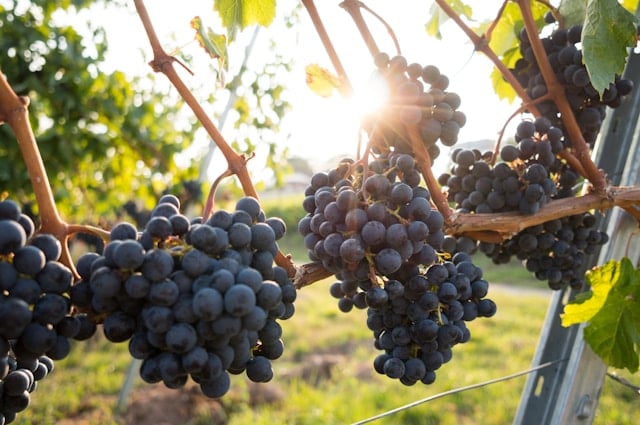In the world of Spanish wines, Tempranillo and Grenache, are two stand-out wine varieties. These grapes, each with their own distinct differences, have captivated wine enthusiasts for centuries. As someone who cherishes the art of winemaking and the joy of savoring a glass, I uncover all the characteristics that make them unique.
Origin, History, and Regions
Tempranillo hails from Spain, particularly the regions of Rioja and Ribera del Duero. Its origins date back centuries, with records tracing its cultivation as far back as the Phoenicians and Romans.
Grenache, while also originating in Spain, has flourished in regions like the Southern Rhône in France and Catalonia in Spain. Both grapes have witnessed the rise and fall of empires, yet their vines have stood the test of time.
Tempranillo thrives in Spain, dominating regions like Rioja, where its bold flavors are celebrated. Additionally, it finds a home in Ribera del Duero, where the continental climate yields structured and robust wines.
Grenache, meanwhile, finds its heartland in France’s Southern Rhône Valley, where it contributes to the famed blends of Châteauneuf-du-Pape. It also makes its mark in Spain’s Priorat region, where the rocky soils impart depth and complexity to the wines. California’s Central Coast is also a notable producer of Grenache, also known as, Garnacha.
Production Techniques
The production techniques for Tempranillo and Grenache vary, reflecting the unique terroirs of their respective regions. Tempranillo often undergoes extended maceration and aging in oak barrels, resulting in wines with pronounced tannins and aging potential. Grenache, on the other hand, is typically fermented in stainless steel or concrete tanks to preserve its vibrant fruit flavors. Aging in neutral oak may occur but is less common, allowing the grape’s inherent characteristics to shine.

Tempranillo and Grenache Flavor Profiles
Tempranillo exhibits a diverse flavor profile, ranging from red fruit notes of cherry and plum to savory elements like leather and tobacco. It often carries a moderate to high level of acidity, balancing its robust tannins and contributing to its age-worthiness. Grenache, known for its juicy red berry flavors, offers a contrast with softer tannins and lower acidity. It delights the palate with hints of strawberry, raspberry, and sometimes a subtle spiciness, making it approachable and versatile.
Alcohol Content and Tannins
In terms of alcohol content, Tempranillo tends to fall in the moderate range, typically ranging from 13% to 15% alcohol by volume. Its tannins can vary depending on factors such as oak aging and vineyard location, but they often lend structure and complexity to the wine. Grenache, meanwhile, boasts higher alcohol levels, often reaching 15% or more. Despite its elevated alcohol content, Grenache’s tannins are usually softer, contributing to its smooth texture and easy-drinking nature.
Color and Aroma
When it comes to appearance, Tempranillo wines typically display a ruby-red hue in their youth, evolving into garnet tones with age. Its aroma is multifaceted, offering a bouquet of red fruits, spices, and earthy undertones. Grenache wines, characterized by their vibrant crimson color, exude an enticing aroma of ripe berries, floral notes, and a touch of herbs.

Food Pairings for Tempranillo and Grenache Wine
Tempranillo’s versatility shines when it comes to food pairings, complementing a wide range of dishes from grilled meats to hearty stews. Its acidity and tannins cut through rich flavors, making it an ideal match for Spanish classics like paella or roasted lamb. Grenache, with its softer tannins and fruit-forward profile, pairs beautifully with Mediterranean cuisine, including roasted vegetables, cured meats, and tomato-based dishes. It also stands up well to spicy fare, enhancing the flavors without overwhelming the palate.
In the world of wine, diversity is celebrated, and Tempranillo and Grenache are prime examples. As far as, which is better, you can’t compare the two. It all depends on your personal preference and what food it will be paired with. So, whether you find yourself drawn to Tempranillo’s structured elegance or Grenache’s exuberant fruitiness, there is one thing you can count on. That is, each glass tells a story and a history that translates to the flavors of each wine.






